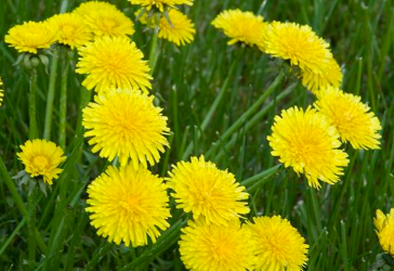
I wondered why so many Spring flowers are yellow and just discovered it's thought the colour helps the few pollinators that are around to find the sparse flowers in low light, and it also helps the plants absorb the weak sun. There's probably a more accurate, scientific explanation - that was my understanding...
I think there's something else very special about spring flowers: they're particularly good for mind, body and spirit. We all start to feel happy when we notice the first snowdrops and then the beginning of the yellows. Our spirits rise and we feel like we can slowly come out of our winter brain-fogged hibernation. Mindful walking may be seen as a modern trend but it's really what many country dwellers do naturally at this time of year, walking slowly loving the new scents, feeling the change in the air on our cheeks, and particularly noticing the different shoots, leaves and flowers all around us.
Every Spring I make the same resolution: to make sure I notice when every new wild flower appears, to take a photo, identify and note the date and place when I saw it (a modern day version of the Edwardian Country Diary by Edith Holden). By May the flowers are appearing so thick and fast and I'm so happy to be outside I usually get behind and forget. A few years ago, my daughter and I did it the old fashioned way, carefully taking one flower and pressing it before adding it to a flower collection book. We focused on a half acre field that isn't used for anything, where wild flowers and grasses have been left to self-seed.Through that one Spring and early Summer we were amazed to collect over 40 different species of wild flower and grass from just that one field.
Apart from the odd trendy restaurant that picks wild garlic or nettles for soup, few of us use the fauna around us, Yet when you research it, it's noticeable just how many uses there are for Spring flowers, just as everyone is surfacing from a Winter of coughs, colds and ailments. The name for Coltsfoot apparently comes from 'tussis ago' - drive away a cough - its leaves and flowers can be dried to make tea for relief from coughs and congestion. Lesser Celandine is also known as Pilewort, supposedly because its tubers resemble haemorrhoids and were therefore seen as a suitable cure. You could also use its leaves to prevent scurvy as they contain plenty of vitamin C.
Dandelions are much maligned when they appear in the middle of the lawn but they're so much more than (very stubborn) weeds. Look up 'health benefits of dandelions' and you'll wonder why we even need the NHS. When I see the first ones in Spring, several memories flood back to me at once - blowing the seed head 'clocks' to tell the time (I was a child in a much simpler time...!), gathering the leaves to feed to my pet rabbit, occasionally eating them tentatively in a salad (they're really good so long as you don't get the ones near the dog's favourite patch of grass...).
My strongest memory took place on the 5th May. That was the date my Uncle Syd declared was always the best day of the year for gathering flowers when they were at their best to make dandelion wine. I have such lovely memories of gathering armfuls of dandelion with my family, Uncle Syd and Auntie Doris - I think of it every 5th May. I have another dandelion memory but it's not quite as strong, somewhat blurred you might say.
It was weeks later when we all tasted the dandelion wine. My sister and I sat on Auntie Doris' sofa, dangling our skinny short legs in fallen-down socks as we slurped the wine. It was known as 'country wine' so it never seemed to occur to anyone to stop us from drinking it, and yet the blurred vision and headache afterwards was surely due to the alcohol! Cheers to the Spring yellows.

 RSS Feed
RSS Feed
